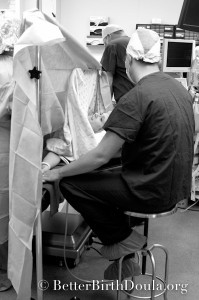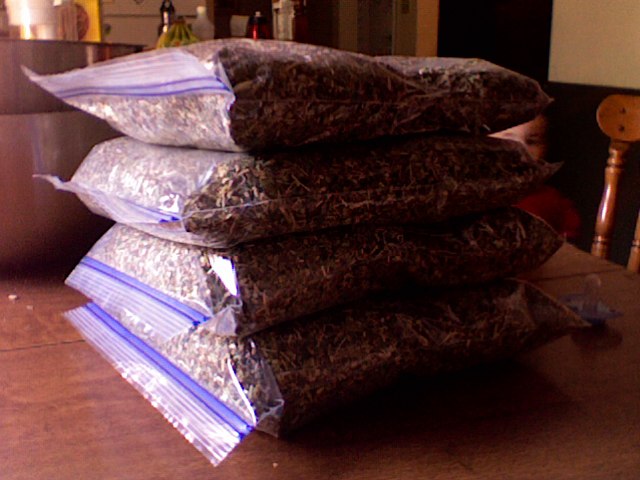 I prefer to call it a cesarean birth (vs. delivery) because you are still giving birth, whether surgically or vaginally. Either way, in the event that you know you'll have a cesarean birth then here are some things to consider discussing with your care team in advance. Some may still be possible if you are having a surprise c-section (you were in labor planning a vaginal birth and had a change of plans!) but in an emergency situation then you may have no time to talk. Consider the c-section rate in this country is around 33%, this is something that all mothers may want to consider in advance:
I prefer to call it a cesarean birth (vs. delivery) because you are still giving birth, whether surgically or vaginally. Either way, in the event that you know you'll have a cesarean birth then here are some things to consider discussing with your care team in advance. Some may still be possible if you are having a surprise c-section (you were in labor planning a vaginal birth and had a change of plans!) but in an emergency situation then you may have no time to talk. Consider the c-section rate in this country is around 33%, this is something that all mothers may want to consider in advance:
- Choose a care provider that has experience, meaning don't let the newest resident gain experience by doing your surgery! 🙂 And speak in advance about closing with two layers of internal sutures (vs. one) which takes longer but read up on it, there are studies saying VBAC success and uterine rupture may be connected to the number of layers at closing.
- Consider choosing a hospital that has anesthesiologists ready (in house if possible) so you can wait until you go into early labor before having the surgery. It won't make it an emergency but even a bit of laboring can provide benefits to your baby and decrease the chance of a premature arrival because of c-section birth scheduled too early. Laboring increases the baby's levels of catecholamines, labor hormones which stimulate your baby in preparation for life outside the womb. If this is not possible then schedule your c-section for as close to your due date as possible to ensure your baby has as much time as possible to finish baking! Many insurance companies will not allow a cesarean to be scheduled before 39 weeks, so ask your doctor.
- If you desire it, ask that they explain every step of the surgery to you. For the c-section birth I recently attended the mother requested this, so the anesthesiologist lowered the screen to allow me to watch and photograph the birth as I described it to the mother.
- Discuss your anesthesia options in advance, ideally with the doctor that will administer your spinal or epidural (or combo.) Find out the pros and cons of each and determine what will be best for you, and also discuss your post surgery pain management. For example, narcotics do nothing for my pain - the morphine drip post-surgery for me was an absolute nightmare. Ibuprofen provided better relief and didn't leave me incoherently drugged. If you are awake for surgery then discuss the possibility of a spinal-epidural combo so post surgery you can have the epidural pain relief for the first 24 hours. (Talk to your doctor.)
- Review the possibility of a blood transfusion, and whether donated your own blood is advised. (I did not know that was an option while expecting but according to this book, The VBAC Companion, up to 10% of women post-surgery will need a transfusion and I've talked with some friends that developed complications and did need them. Donating your own blood is safer, if allowed while you are expecting. When I was in the range to receive a transfusion due to hemorrhaging during pregnancy they were able to push fluids and other nutrients to stabilize my blood volume but in the midst of crisis is not when you want to discuss this.)
- Ask who may be with you in the OR, generally a spouse is welcome but the doctor can also authorize your doula, another family member, or your photographer to be there. This allows one person to remain close to you and another to be near your baby. See this post for an explanation of how a doula can help with a cesarean birth.
- Express your personal preferences for the OR, whether it is music, silence so you and your spouse can first greet the baby, lowering the curtain so you can see the baby being lifted up, have one arm free so you can touch your baby, etc.
- Request that the baby be brought near you as soon as possible and held to you (with assistance from your spouse or doula) so the baby can smell your scent and so you can touch your baby. Specify that you want the baby to be examined and bathed within your line of sight, so have them move the infant bed near you if at all possible.
- Request that the baby not be brought to the nursery but remain with you in the OR and then come to recovery with you. (Or you can request the baby be brought to the nursery while your surgery is complete then brought to you in recovery, but the nursery staff may or may not bring your baby back quickly.) More hospitals are working to ensure the baby and mom remain together throughout the birth and postpartum stage, which is wonderful!
- Arrange to do skin-to-skin care and nurse your baby as quickly as possible, generally in recovery. More and more hospitals are making it possible for moms to have skin-to-skin with their babies while still in the OR, and ask if this is possible. Request extra pillows to provide nursing support/cover your incision site. This is when your partner and doula will be especially helpful as you nurse and recover.
- Plan to have daily assistance in the hospital and at home for the first two weeks. You will be taking care of a newborn and recovering from major abdominal surgery and YOU WILL NEED HELP. Overdoing tasks physically risks delaying your healing and opening your incision site. The sleep deprivation and emotional stress can wear down your immune system, also delaying your healing, so take it easy. If you have older children you will need someone to lift and care for them. Anticipate that it will take time for you to get back to any sense of normal, and be patient with yourself. If you know you'll be having a cesarean birth then seriously consider having a close family member to come stay for those first couple weeks, or the first week your spouse returns to work. Also consider a postpartum doula.
- Learn more about your options for a cesarean birth plan.
*As an Amazon Associate I earn from qualifying purchases made through affiliate links. This does not impact your purchase price, and helps support this website.







